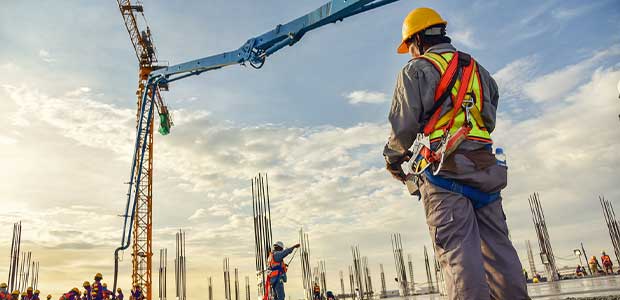
How to Implement a Safety Management Program at Your Construction Firm
Start to think about safety as a comprehensive program.
- By Gen Simmons
- Aug 01, 2022
The construction industry is full of risks. According to the Bureau of Labor Statistics, the average Total Recordable Incident Rate (TRIR) for all industries, including state and local government, is three cases per 100 full-time workers in 2019. Some specialty trade had worse rates—midsize structural steel and precast concrete contractors average 4.2, and framing contractors of all sizes average 6.8. There were almost 1,000 fatalities and 250,000 medically consulted injuries in the construction industry in the US in 2020. Of these fatalities and injuries, many were preventable.
OSHA classifies construction fatalities in four areas, with falls leading the group, followed by being struck by an object, electrocutions, and caught in between. If OSHA cites your company, it can be pretty costly. In 2022, OSHA serious violations cost $14,502 for each incidence, failing to fix the issue costing the same amount per day. Repeat violations are fined $145,027.
To mitigate these fines and improve your organization's safety, construction firms need to deploy safety management software as part of a comprehensive safety program. An entire safety program for your construction firm should include:
- Safety Management Software
- Toolbox Talks
- Safety Training
- Change Management
- Building a Safety Culture
Safety Management Software
Safety management software turns manual, paper-based processes into digital assets. This software digitizes all safety records and reports. It allows companies to see the big picture of what is going on within the business.
A digital safety management program allows you to capture information and create a proactive safety program where you can stop potential safety issues before something happens.
Because your records are all digitized, it takes only minutes instead of days to generate compliance reports. Project managers are always up to date since they receive safety information once it’s submitted and can help take action to protect people and equipment at the jobsite.
Foremen in the field can instantly log important safety information, such as inspections on each piece of equipment used for the day. Field crews can also report near-misses. If an incident occurs at a jobsite, your team can be alerted to the issue and be ready to change plans. Foremen can also keep track of attendants at safety meetings by taking their pictures and capturing their signatures on reports.
This article originally appeared in the July/August 2022 issue of Occupational Health & Safety.